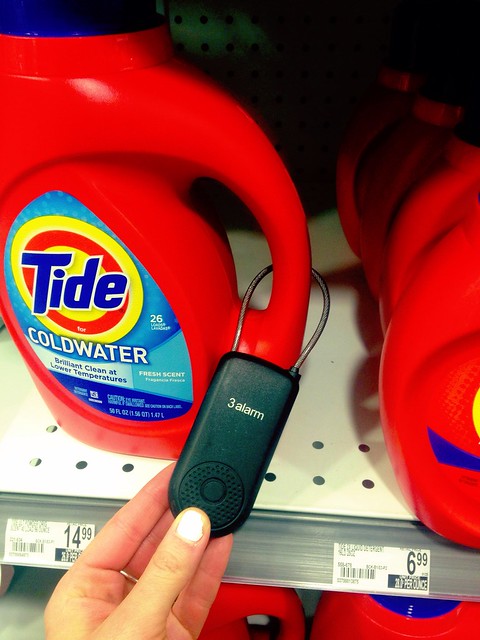I had heard about the epidemic of Tide thefts over the past couple of weeks, but finally read this article about it. Really interesting to hear about both the psychological and social roots that have slowly led to this bizarre cultural phenomenon, and the economic ramifications of it. All that blended with a bit of new knowledge on inventory, stocking, reselling stolen product, and the rise of this mass theft resulting in part from keener analysis on risks and benefits. It all lingered in my mind by today, at best, until I was met with this at a local drugstore:
Derrick pointed out that this is leather-jacket-level security. I asked the associates about it as well; apparently the hardware is so new that they still fiddle with the plastic tools that unlock each bottle. Which reminded me of this paragraph:
For stores, stopping Tide shoplifting presents unique challenges. Most frequently stolen goods—GPS devices, smartphones, and other consumer electronics—are pricey, light, and easily concealed. They’re also not routine purchases, which means they can be locked up until buyers ask for them. Bulk goods like detergent are harder to run off with, but they’re also bought by dozens of customers daily—lock those products up, and a store manager adds more time to his customers’ errand runs, potentially sending them to shop elsewhere. “Any time you secure something, it impacts the sale of that item at some level,” says Jerry Biggs, the director of Walgreens’ Organized Retail Crime Division.This reminds me of something I'd hear about on the Freakonomics podcast; remember the cobra effect?
